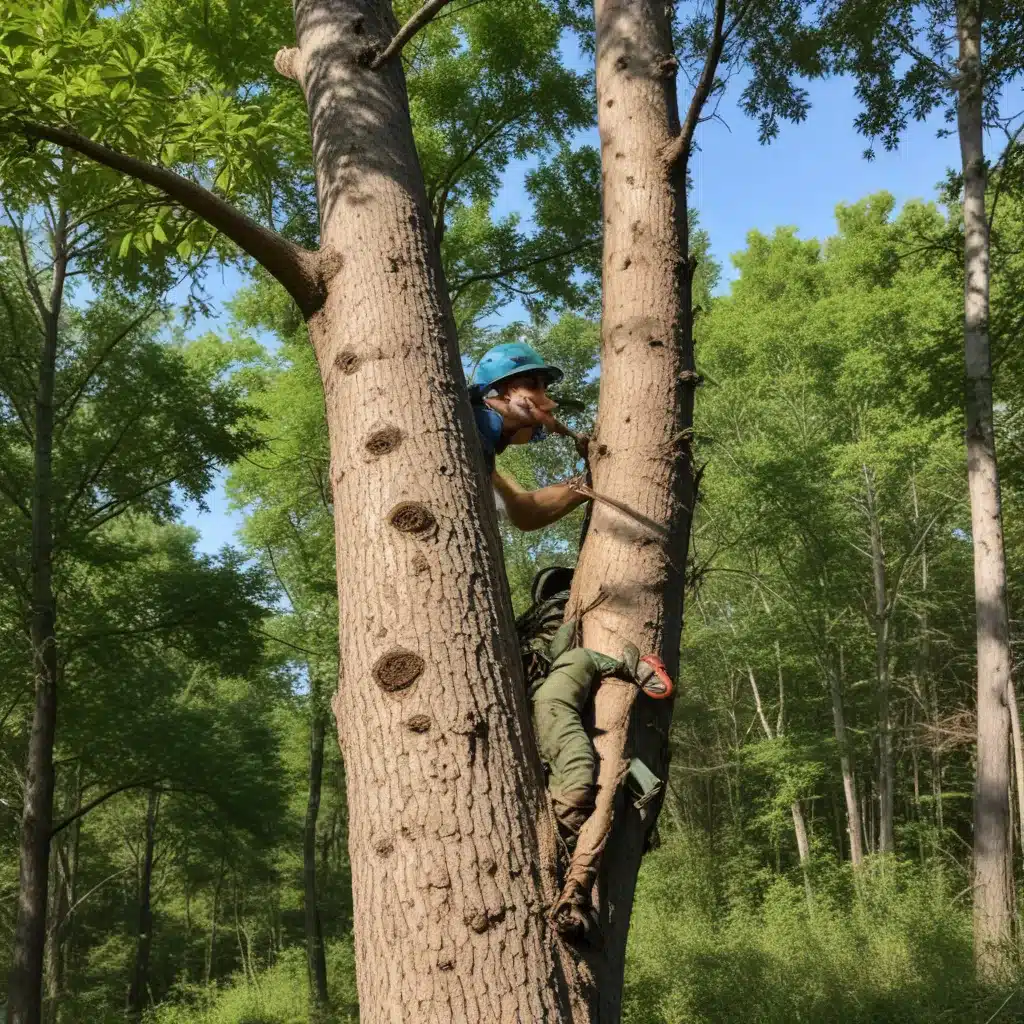
The preservation of native ecosystems is a critical environmental priority. However, the encroachment of invasive species poses a grave threat to the delicate balance of these natural habitats. As a tree care specialist at TriCounty Tree Care, I am dedicated to sharing insights on the strategic removal of invasive tree species to safeguard the ecological integrity of our local landscapes.
Native Ecosystem Conservation
Native ecosystems are the foundation upon which thriving communities of flora and fauna depend. These intricate webs of interdependence are not only aesthetically pleasing, but also provide invaluable ecosystem services such as air and water purification, carbon sequestration, and habitat for endangered species. Tragically, the unchecked spread of non-native, invasive plants can disrupt these essential functions, leading to a cascading decline in biodiversity and overall ecosystem health.
Invasive Species Identification
Invasive species are characterized by their ability to rapidly proliferate and outcompete native plants for resources like sunlight, water, and nutrients. Common invasive tree species include the Tree of Heaven (Ailanthus altissima), Autumn Olive (Elaeagnus umbellata), and Norway Maple (Acer platanoides). These aggressive invaders can form dense monocultures, crowd out native vegetation, and alter soil chemistry, ultimately transforming the entire character of an ecosystem.
Strategic Tree Removal
Carefully targeted tree removal is often a necessary component of invasive species management. TriCounty Tree Care employs a range of techniques to selectively eliminate problematic trees while minimizing collateral damage to the surrounding environment. This may involve cut-and-treat methods, where the trunk is severed, and an herbicide is applied directly to the stump to prevent resprouting. In dense infestations, foliar spraying of herbicides may be warranted, but this approach requires meticulous application to avoid harming desirable native plants.
Ecosystem Restoration Strategies
The strategic removal of invasive trees is merely the first step in a comprehensive restoration plan. TriCounty Tree Care works closely with local conservation groups and land managers to replant areas with native tree and understory species that are well-suited to the site conditions. Ongoing monitoring and maintenance are essential to ensure the long-term success of these restoration efforts, as vigilance is required to detect and quickly address any recurrence of invasive plants.
Ecological Principles in Invasive Species Management
Effective invasive species management is rooted in a deep understanding of ecological principles. Biodiversity is the foundation of a healthy, resilient ecosystem, as diverse communities are better equipped to withstand disturbances and environmental stressors. Invasive species disrupt this delicate balance, often leading to a homogenization of the landscape and a decline in ecosystem services.
The process of ecological succession also plays a crucial role in invasive species management. As native habitats are restored, it is essential to guide the trajectory of succession by actively planting and nurturing desirable species. This approach helps to ensure that the restored areas develop into self-sustaining, resilient ecosystems that can resist future invasions.
An integrated pest management (IPM) approach, combining mechanical, biological, and chemical control methods, is often the most effective and sustainable strategy for addressing invasive species. TriCounty Tree Care tailors its interventions to the specific characteristics and environmental context of each site, prioritizing the use of ecologically-sound techniques that minimize collateral damage.
Regulatory Frameworks and Conservation Efforts
At the national and international levels, policymakers have recognized the urgent need to address the threat of invasive species. The U.S. Department of the Interior, for example, has developed a strategic plan to guide coordinated efforts in prevention, early detection, and rapid response. TriCounty Tree Care actively collaborates with local and regional conservation organizations to align its practices with these broader regulatory frameworks and best management practices.
Community engagement and public outreach are also crucial components of effective invasive species management. TriCounty Tree Care works to educate landowners, community groups, and the general public about the threats posed by invasive species and the importance of native ecosystem conservation. By fostering a sense of stewardship and empowering citizens to participate in volunteer-driven removal projects, we can amplify the impact of our professional interventions.
Economic and Social Impacts of Invasive Species
The consequences of unchecked invasive species extend far beyond the ecological realm, also posing significant economic and social challenges. Invasive plants can severely impact agricultural and forestry industries, reducing crop yields and timber values. The costs associated with invasive species management and the loss of ecosystem services can be staggering, underscoring the importance of proactive prevention and control measures.
Furthermore, the presence of invasive species can have profound implications for the cultural and recreational value of natural areas. TriCounty Tree Care recognizes that the preservation of native ecosystems is not merely an environmental imperative but also a matter of upholding the cultural heritage and quality of life for the communities we serve. By working closely with stakeholders and incorporating their perspectives, we strive to balance the ecological needs of the landscape with the social and economic interests of the people who depend on it.
In conclusion, the strategic removal of invasive tree species is a critical component of native ecosystem conservation. TriCounty Tree Care is committed to leveraging its expertise in arboriculture and ecological restoration to help protect the delicate balance of our local landscapes. By adhering to sound scientific principles, collaborating with conservation partners, and engaging the broader community, we can secure a future where native ecosystems thrive, and the rich tapestry of biodiversity is preserved for generations to come. To learn more about our comprehensive tree care services, please visit TriCounty Tree Care.


